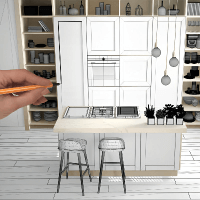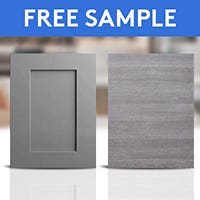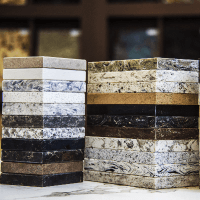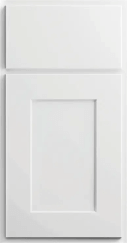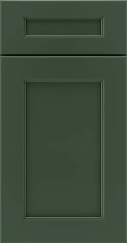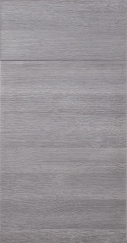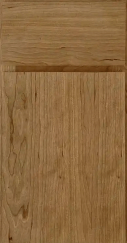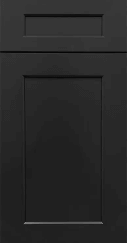Raised panel cabinets create a warm elegant look to any kitchen, old or new. Whether complementing the architecture in an older home or creating a traditional feel in a newer kitchen, this style can do both. A door panel with edges routed to float in the frame define a raised-panel design. The varied depth enhances the lines of the cabinetry with light and shadow. In CliqStudios Signature line cabinets with a stained wood finish, appearance of the wood grain varies from flat or stepped to curved surfaces for a subtle, rich effect. Each door panel becomes, in effect, a display piece.


Blending Shapes & Textures
Variations across raised-panel cabinet styles include the shape and degree of the panel edge route, the shape of the inside and outside edges of the door frame, the width of the rails and styles, and whether the door is built with mitered or mortise-and-tenon corners. The raised-panel style is equally comfortable in traditional and transitional designs. You can dress it up or down with crown molding, or even add furniture feet and glass doors. Raised panel cabinet styles help create furniture-look features including, buffets, pantries and entry benches.
Decorative cabinets, shown above in a cream Bisque Glaze finish, feature precisely mitered frames and eased waterfall door frame edges, a testament to traditional craftsmanship. In the home above, the cabinets form the foundation of a traditional interior design. Open-frame glass-door cabinets on either side of the sink brighten the space while protecting and displaying the homeowner’s china collection. A rustic wood island and oil-rubbed bronze chandelier complete the old-world effect.
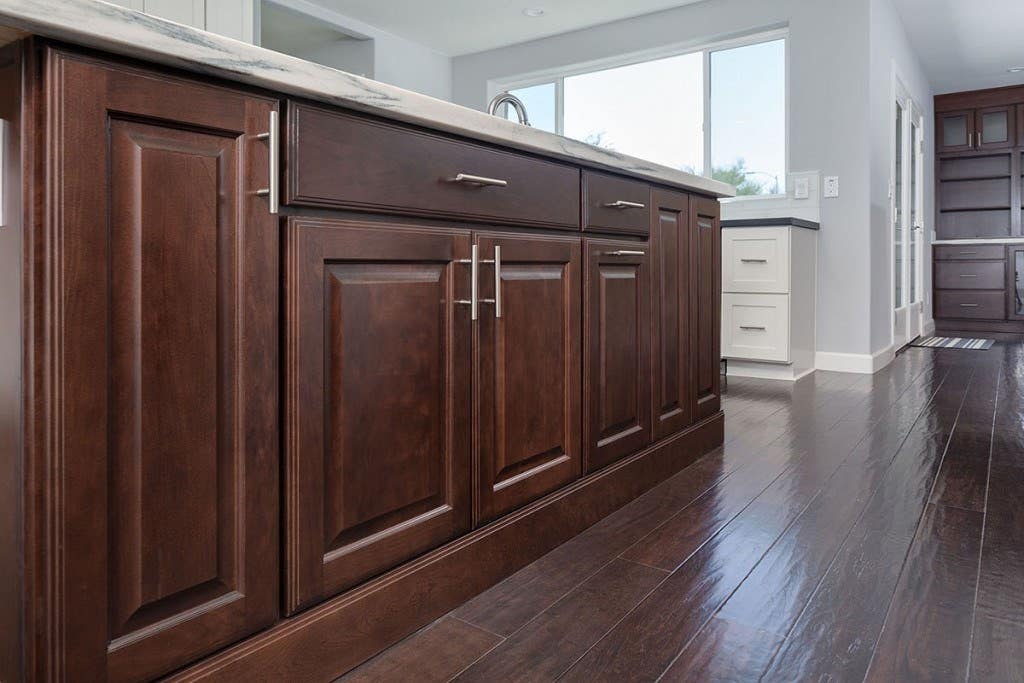

Dark Toned Cabinets
The custom island above is built from Decorative medium wood stain cabinets. Notice the beautiful variation in appearance of the solid hardwood door panels between the scalloped panel edges and flat surfaces. Graceful waterfall door frame edges, inside and out, provide another opportunity for the cherry to show off. The island, contrasting in both style and color with white Shaker perimeter cabinets and trimmed with ogee molding at the toekick, becomes a furniture showpiece, a seamless transition to the living area.
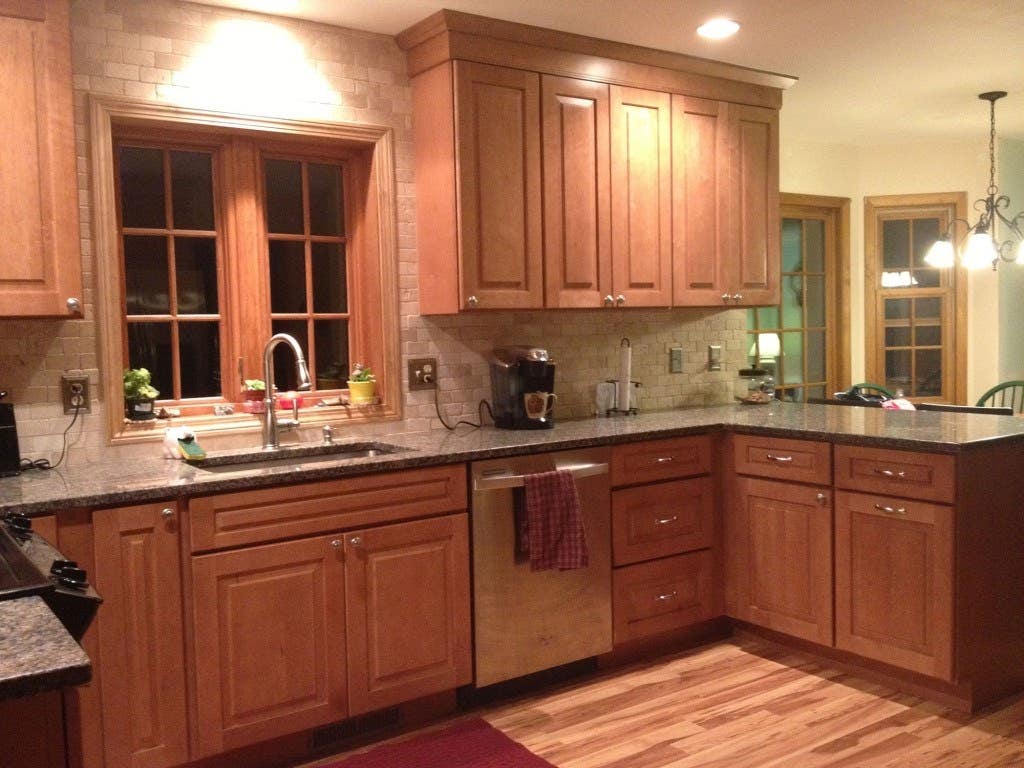

Light Toned Cabinets
Doors and drawer fronts in the Decorativemedium wood stain cabinets pictured above feature stepped profile edges on the inside and outside of the frames. The stiles and rails are slightly wider than average, and the raised panel features an angular route and step. The cabinets are finished with double crown molding in a similarly angular, stepped style. Finally, the window becomes a part of the cabinetry with complementary maple trim.


Bold Tones
In the transitional kitchen design above, the island and buffet and pantry adjacent to the living room are built from Decorative Painted red cabinets, while white cabinets in the same style line the perimeter walls. The crisp, clean lines of the Decorative style make it a natural choice for traditional or transitional designs. The style features a stepped inside profile on the door frame and panel edge. In addition to an angular route on the raised door panel. Furniture feet and a decorative end panel neatly finish the island and buffet. This makes for a furniture look that segues gracefully to the living area beyond.
